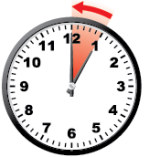CDT Caribbean to UTC
Time Difference
Cuba Standard Time is 5 hours behind Universal Time Coordinated
12:00 pm12:00 in CST is 5:00 pm17:00 in UTC
CDT to UTC call time
Best time for a conference call or a meeting is between 8am-2pm in CDT which corresponds to 12pm-6pm in UTC
12:00 pm12:00 Cuba Standard Time (CST). Offset UTC -5:00 hours
5:00 pm17:00 Universal Time Coordinated (UTC). Offset UTC 0:00 hours
12:00 pm12:00 CST / 5:00 pm17:00 UTC
| CST | UTC |
|---|---|
| 12am (midnight) | 5am |
| 1am | 6am |
| 2am | 7am |
| 3am | 8am |
| 4am | 9am |
| 5am | 10am |
| 6am | 11am |
| 7am | 12pm (noon) |
| 8am | 1pm |
| 9am | 2pm |
| 10am | 3pm |
| 11am | 4pm |
| 12pm (noon) | 5pm |
| 1pm | 6pm |
| 2pm | 7pm |
| 3pm | 8pm |
| 4pm | 9pm |
| 5pm | 10pm |
| 6pm | 11pm |
| 7pm | 12am (midnight) |
| 8pm | 1am |
| 9pm | 2am |
| 10pm | 3am |
| 11pm | 4am |
| 0:00 | 5:00 |
| 1:00 | 6:00 |
| 2:00 | 7:00 |
| 3:00 | 8:00 |
| 4:00 | 9:00 |
| 5:00 | 10:00 |
| 6:00 | 11:00 |
| 7:00 | 12:00 |
| 8:00 | 13:00 |
| 9:00 | 14:00 |
| 10:00 | 15:00 |
| 11:00 | 16:00 |
| 12:00 | 17:00 |
| 13:00 | 18:00 |
| 14:00 | 19:00 |
| 15:00 | 20:00 |
| 16:00 | 21:00 |
| 17:00 | 22:00 |
| 18:00 | 23:00 |
| 19:00 | 0:00 |
| 20:00 | 1:00 |
| 21:00 | 2:00 |
| 22:00 | 3:00 |
| 23:00 | 4:00 |
Cuba Daylight Time
Offset: CDT is 4 hours behind Greenwich Mean Time (GMT) and is used in Caribbean
Countries: It is used in following countries: Cuba
Principal Cities: The largest city in the CDT timezone is Havana from Cuba with population about 2.164 million people. Other major cities in the area are Santiago de Cuba, Camaguey, Holguin, Guantanamo
Daylight Saving: Cuba Daylight Time (CDT) is a daylight saving/summer time zone, however during winter some places adjust time for one hour back and observe Cuba Standard Time (CST).
 End: Cuba Daylight Time (CDT) has ended on Sunday, November 3, 2024 at 1:00 am local time and clocks were set one hour back to Sunday, November 3, 2024, 12:00 am local standard time instead. Daylight saving ends annually the on first Sunday of November
End: Cuba Daylight Time (CDT) has ended on Sunday, November 3, 2024 at 1:00 am local time and clocks were set one hour back to Sunday, November 3, 2024, 12:00 am local standard time instead. Daylight saving ends annually the on first Sunday of November
 Start: Cuba Daylight Time (CDT) starts on Sunday, March 9, 2025 at 12:00 am local time and clocks are set one hour forward to Sunday, March 9, 2025, 1:00 am. Daylight saving starts annually the on second Sunday of March
Start: Cuba Daylight Time (CDT) starts on Sunday, March 9, 2025 at 12:00 am local time and clocks are set one hour forward to Sunday, March 9, 2025, 1:00 am. Daylight saving starts annually the on second Sunday of March
CDT representations, usage and related time zones
- -04 - basic short
- -0400 - basic
- -04:00 - extended
- -0400 - sign character (-) followed by a four digit time providing hours (04) and minutes (00) of the offset. Indicates four hour and zero minutes time differences to the west of the zero meridian.
- Quebec - Military abbreviation for CDT
- Q - short form of 'Quebec'
- America/Havana
- Cuba
- Central Daylight Time - UTC -5
- Cuba Daylight Time - UTC -4
- AST - Atlantic Standard Time
- EDT - Eastern Daylight Time
- AMT - Amazon Time
- BOT - Bolivia Time
- CDT - Cuba Daylight Time
- CLT - Chile Standard Time
- FKT - Falkland Island Time
- GYT - Guyana Time
- HLV - Hora Legal de Venezuela
- PYT - Paraguay Time
- Q - Quebec Time Zone
- VET - Venezuelan Standard Time
Universal Time Coordinated
Offset: UTC is 0 hours ahead Greenwich Mean Time (GMT) and is used in Universal
Coordinated Universal Time (UTC) is the world time standard that regulates clocks and time. It is successor to Greenwich Mean Time (GMT). For casual use, UTC is the same as GMT, but is used by the scientific community.
UTC is the time standard commonly used across the world since 1972. It is used in many technical fields, like aviation industry and meteorologists, also used to synchronize time across internet networks.
UTC representations, usage and related time zones
- Z - is the zone designator for the zero UTC/GMT offset, also known as 'Zulu' time
- +00 - basic short
- +0000 - basic
- +00:00 - extended
- +0000 - sign character (+) followed by a four digit time providing hours (00) and minutes (00) of the offset. Indicates zero hour and zero minutes time differences of the zero meridian.
- Zulu - Military abbreviation for UTC
- Z - short form of 'Zulu'
- Etc/UCT
- Etc/UTC
- Etc/Universal
- Etc/Zulu
- UCT
- UTC
- Universal
- Zulu
- EGST - Eastern Greenland Summer Time
- GMT - Greenwich Mean Time
- WET - Western European Time
- AZOST - Azores Summer Time
- UTC - Universal Time Coordinated
- WT - Western Sahara Standard Time
- Z - Zulu Time Zone
